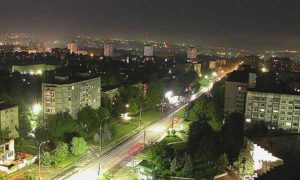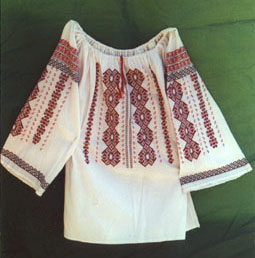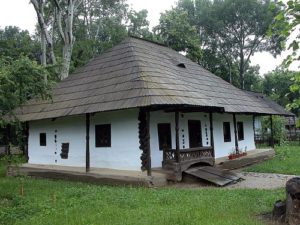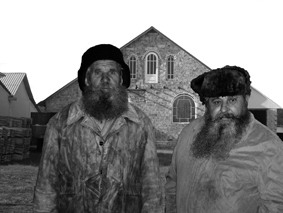Receive our newsletter
Your e-mail address is only used to send you our newsletter and information about the activities of Strasbourg Europe. You can always use the unsubscribe link included in the newsletter.
Landlocked between Romania and Ukraine, Moldova is the modern-day descendant of the Principality of Moldavia (1359-1859) which saw its territory broken up between the region of Moldova in Romania, Moldova, and Ukraine. The current Republic of Moldova, so named in order to differentiate it from the historical region of Romania, includes the regions of Bessarabia to the east and south. During the 19th century, the Principality of Moldavia united with the Principality of Wallachia to form Romania. Since the independence of Moldova, political life has been divided between the communist Soviet influence and the non-Communist western European model. Although it has been independent from the USSR since 1991, Russian forces have remained on Moldovan territory east of the Dniester River, supporting the Slavic majority population, mostly Ukrainians and Russians, who have proclaimed a “Transnistria” republic. One of the poorest nations in Europe, Moldova became the first former Soviet state to elect a Communist as its president in 2001.
© CIA World Factbook
 The city of Chisinau (Kishinev) is the administrative, political, economic, scientific, cultural and touristic center of Moldova. Etymologically, the name means “water spring” because of the two rivers that cross the city, the Bic and the Işnovăţ. Nicknamed “the white city bathed in a green sea” because of the many buildings of white stone drowning in the green hills on which the capital is located, Chisinau is particularly beautiful in summer, with its wide tree-lined boulevards, and squares with abundant flowers.
The city of Chisinau (Kishinev) is the administrative, political, economic, scientific, cultural and touristic center of Moldova. Etymologically, the name means “water spring” because of the two rivers that cross the city, the Bic and the Işnovăţ. Nicknamed “the white city bathed in a green sea” because of the many buildings of white stone drowning in the green hills on which the capital is located, Chisinau is particularly beautiful in summer, with its wide tree-lined boulevards, and squares with abundant flowers.Embroidery, the passion of Moldovan women
 Embroidery is a popular pastime for many Moldovans. In ancient Greek, the writings of Herodotus mention that the Thrace people (ancestors of the Moldovans) decorated their clothing with exquisite embroidery. Embroidery began to develop as a popular form of art during Medieval times. For the most part, fine tissues of linen or cotton are used for embroidery in this region. As time progressed, the art of embroidery evolved, and several new techniques were developed. Moreover, embroidery is an essential factor in traditional Moldovan garb, which consists of a linen or hemp shirt, decorated with exquisite embroidered designs.
Embroidery is a popular pastime for many Moldovans. In ancient Greek, the writings of Herodotus mention that the Thrace people (ancestors of the Moldovans) decorated their clothing with exquisite embroidery. Embroidery began to develop as a popular form of art during Medieval times. For the most part, fine tissues of linen or cotton are used for embroidery in this region. As time progressed, the art of embroidery evolved, and several new techniques were developed. Moreover, embroidery is an essential factor in traditional Moldovan garb, which consists of a linen or hemp shirt, decorated with exquisite embroidered designs.© moldavie.fr
 Developed throughout centuries, the rural architecture of Moldova is marked by tradition, diversity, and an extremely varied style.
Developed throughout centuries, the rural architecture of Moldova is marked by tradition, diversity, and an extremely varied style. Between Two Worlds…
As a former Soviet republic, Moldova gained its independence in 1991, following the fall of the USSR. Moldova is the only former Soviet state where the official language is of Latin origin. It is also interesting to note that Moldova serves as a center-point between two civilizations: Slavic civilization on one side (Russia, Ukraine, Poland, Bulgaria), and Latin on the other (Romanians and the Moldovans).

“Freakies” from the north
Pocrovca village, in the district of Donduseni, is very peculiar: no inhabitant ever leaves to look for a job abroad. Even the younger generation completes their studies in other cities and then returns to Pocrovca, where they are almost forced to get married, according to local rites.
Sources of texts:
Chisinau
http://www.moldavie.fr/article.php3?id_article=40
Embroidery
http://www.moldavie.fr/article.php3?id_article=543
Architecture
http://www.moldavie.fr/article.php3?id_article=345
Your e-mail address is only used to send you our newsletter and information about the activities of Strasbourg Europe. You can always use the unsubscribe link included in the newsletter.
Information Center
on the European Institutions (CIIE)
Europe Direct Information Center
All rights reserved to the CIIE
Non-profit organization
Mailing address
1 allée Kastner
67000 Strasbourg
France
Visitors entrance
8 rue Boecklin
67000 Strasbourg
France
To provide the best experiences, we use technologies such as cookies to store and/or access device information. Consenting to these technologies will allow us to process data such as browsing behavior or unique IDs on this site. Failure to consent or withdrawing consent may adversely affect certain features and functions.
Europe Direct network
The CIIE team
Contact information and opening hours
Lieu d’Europe
The CIIE offices
Contact us
CIIE’s Documentation Centre & Publications
School presentations & Activities
Borrowing of learning material
Activities for the general public
Institutions of the European Union in Strasbourg
Institutions Under the Authority of the Council of Europe
Other European Organisations in Strasbourg
Sessions of the European institutions in Strasbourg
Visiting the institutions
Map of the European district of Strasbourg
Institutions in Strasbourg in photos
Discover artistic Europe
National holidays of the member states of the Council of Europe